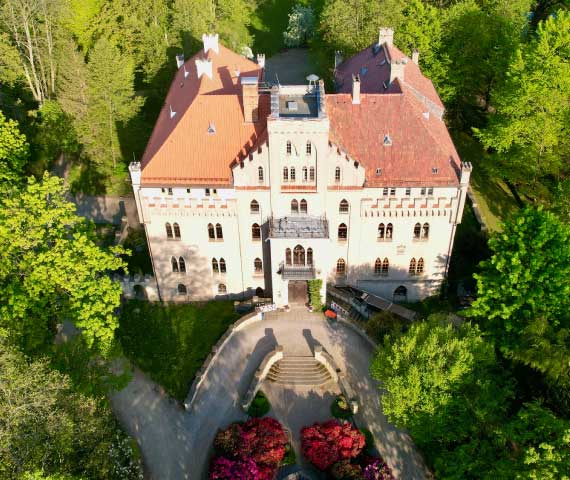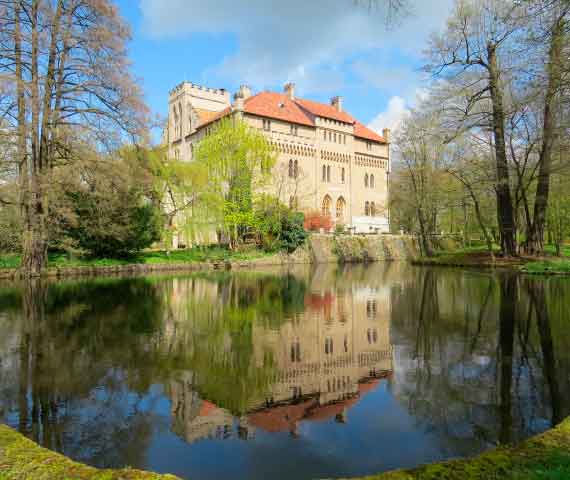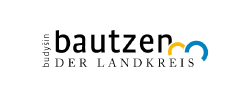Count Heinrich von Brühl was rewarded several times by kings Augustus II and Augustus III with entitlements to manors where the owning family was expected to die out due to a lack of descendants. In 1732, for example, he was awarded Seifersdorf. When Hans Georg von Grünrodt died in Seifersdorf in 1747 without leaving any male heirs, the estate came to the prime minister, thanks to the entitlement. Whether Count Heinrich von Brühl ever visited Seifersdorf is not documented with certainty. After his death, the estate was initially placed in receivership. In order to pay off debts, the sons had to gradually sell the estate. Count Hans Moritz von Brühl, the youngest son of the prime minister, initially received the manor of Zschepplin near Eilenburg from the estate. When it became apparent that it would be impossible to maintain this property, he decided in 1774 to take over Seifersdorf manor, which had a much lower value.
Seifersdorf manor and palace remained in the family for five generations - until they were expropriated in 1945. In 1909, Count Karl von Brühl inherited the estate of the Counts of Renard in Groß Strehlitz (today Strzelce Opolskie) in Upper Silesia and took the name "Count von Brühl-Renard". As he had no children, the Seifersdorf branch of the family died out with him in the male line in 1923. The last occupant of the castle was his second wife Agnes.
Christina von Brühl, known as Tina, the wife of Count Hans Moritz von Brühl, created a small "court of the Muses" in Seifersdorf at the end of the 18th century by corresponding with poets, painters and musicians, inviting themto Seifersdorf and inspiring them to create art. She herself designed a romantic landscape park in the Seifersdorf valley.
Today: Seifersdorf Palace belongs to the municipality of Wachau. It is currently being renovated and developed into a cultural centre.










